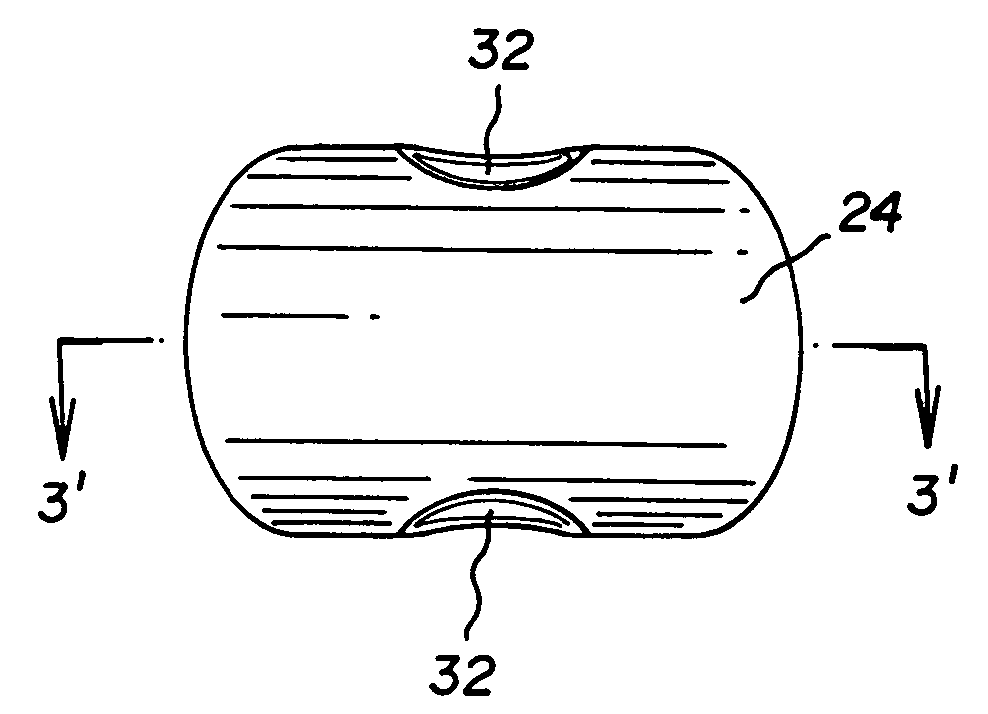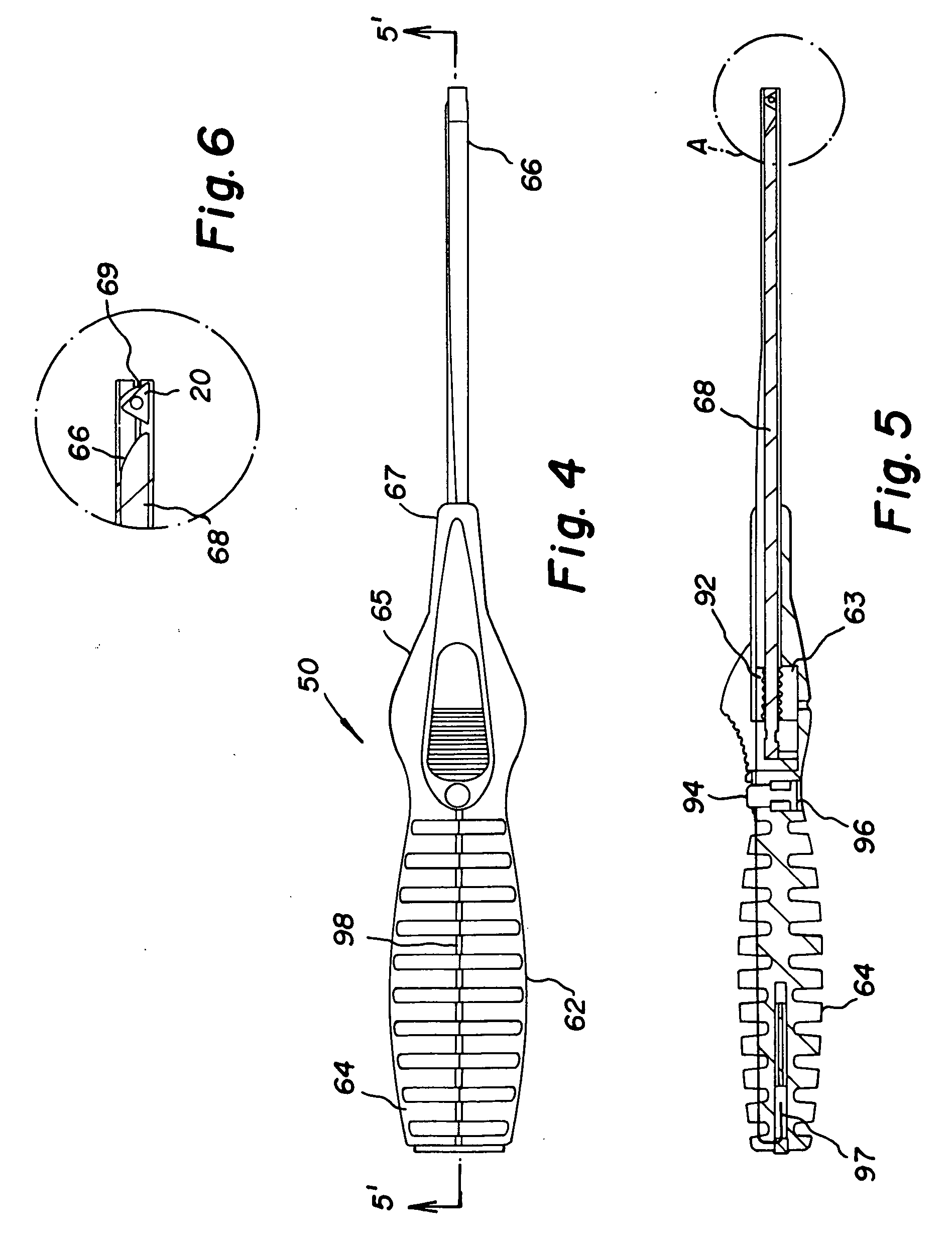Suture anchor and suture anchor installation tool
a technology of suture anchors and installation tools, which is applied in the field of suture anchors, can solve the problems of increasing the load and stress placed on, generating numerous bone tunnels, and joint injuries with corresponding damage to associated soft tissue, so as to promote the use of natural bone growth, prevent back pain, and high tissue acceptability
- Summary
- Abstract
- Description
- Claims
- Application Information
AI Technical Summary
Benefits of technology
Problems solved by technology
Method used
Image
Examples
Embodiment Construction
[0062] The preferred embodiment and the best mode of the suture anchor of the invention is shown in FIGS. 1-3 and the insertion tool is shown in FIGS. 4-25. The suture anchor is a sterile allograft bone suture anchor 20 with a body 22 having a distal end 24 with a radially rounded outer surface having a preferred length of 5.50 mm + or −0.10 mm when the same is used in a 3.5 mm bore hole and two tapered planar side walls 26 ending in a dome shaped or rounded proximal end 28. The general configuration of the cross section of the suture body as noted in FIG. 3 is that of a triangle. The two planar side walls 26 form an angle of approximately 60° when an axial plane extending across each planar surface 26 is extended away from the distal end 24 past the proximal end 28 to intersect forming the angle. The intersection of each side wall 26 with the distal end 24 forms a sharp end surface 30 which digs into the cancellous bone of the bore holding the suture anchor 20 firmly in place. The ...
PUM
 Login to View More
Login to View More Abstract
Description
Claims
Application Information
 Login to View More
Login to View More - R&D
- Intellectual Property
- Life Sciences
- Materials
- Tech Scout
- Unparalleled Data Quality
- Higher Quality Content
- 60% Fewer Hallucinations
Browse by: Latest US Patents, China's latest patents, Technical Efficacy Thesaurus, Application Domain, Technology Topic, Popular Technical Reports.
© 2025 PatSnap. All rights reserved.Legal|Privacy policy|Modern Slavery Act Transparency Statement|Sitemap|About US| Contact US: help@patsnap.com



